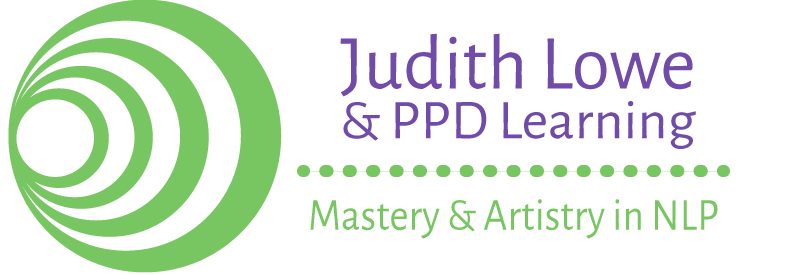Introduction to: A Proposed Distinction for Neuro-Linguistic Programming
By Robert Dilts
Anyone who claims to know or care about Neuro Linguistic Programming (NLP) is aware that the process of modeling is the life blood of the field. The origin of NLP and its continued evolution come from the ability of NLP practitioners to model the verbal, cognitive and behavioral patterns (the “neuro-linguistic programs”) of exceptional people. It is frequently pointed out that the basis of NLP is modeling and not the “trail of techniques” that have been left in its wake.
For all of the acknowledgment and emphasis on modeling, however, there has not been a clear and shared perspective on exactly what NLP modeling is, nor an awareness that there are different varieties of modeling.
For some, modeling is essentially strategy elicitation. For others it simply means using NLP distinctions when describing some phenomenon. Others perceive modeling as the imitation of key behaviors.
The most powerful and generative models are those which capture something of the deep structure of the individual or individuals being observed. This is quite different than describing or imitating surface level behaviors. Reaching this deep structure has been one of the crowning achievements of NLP and requires a special methodology.
In the following article, John Grinder and Carmen Bostic St. Clair lay out a set of criteria for distinguishing between the unique form of modeling from which the initial techniques and distinctions of NLP were derived (“NLP modeling”) from other forms of modeling that apply NLP distinctions but use other means of information gathering and pattern fining.
The distinction presented in this article is a result of several ongoing discussions we have been having about the system of knowledge (or “epistemology”) of NLP. While different forms of modeling may be useful and even necessary in order address particular contexts or to reach particular outcomes, the distinction and criteria John and Carmen are proposing feel to me to be essential in order to more clearly establish and honor what is unique to NLP as a field as well as to respect its intellectual history.
I admit that my own modeling work frequently falls into the category that John and Carmen refer to as Analytic Modeling, and at other times applies a combination of Analytic and more pure NLP Modeling. I fully support John and Carmen in making this differentiation and believe it is vital that practitioners of NLP learn the unique form of NLP Modeling and understand its difference from Analytic Modeling.
As John and Carmen state, the distinction presented in this article are intended to be the beginning of a conversation for those committed to the field of NLP, an ongoing and hopefully fruitful conversation, to bring greater clarity, precision and understanding about the truly unique contributions of NLP.
As Gregory Bateson used to say, “Let it be heard.”

